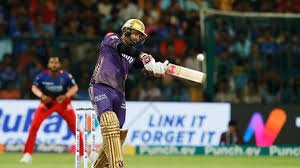
The Board of Control for Cricket in India (BCCI) is said to be looking to stage an Indian Premier League (IPL) match in Ayodhya for the first time in the league’s history. If this happens, it would be an important test of both Indian cricket and Ayodhya, as the city prepares to evolve from a region with a currently religious identity to a more diversified identity as it urbanizes through tourism. Though the discussions are still highly preliminary, they raise several questions regarding the feasibility, propriety, and overall social, political, cultural, and economic costs and implications.
Contextual Framework: From Pilgrim to Play
Ayodhya’s history as one of spiritual importance for millions of Hindus around the world is now competing for urban anthropological space as pilgrimage accounts balance myriads. In short, Ayodhya now has considerable investment that is occurring after the lifting or reconsideration of the religious identity of the city in light of the landmark Supreme Court ruling to allow construction and access to the new Ram Mandir after decades of contention. Infrastructure is being improved in leaps and bounds to prepare for existing and future tourism that will really drive Ayodhya’s place as a tourism hub. In terms of the overall vision released by the Uttar Pradesh government, they looking to make Ayodhya a “global heritage city” with the new airport (Maryada Purushottam Shri Ram International Airport), new highways to accommodate the existing and new tourist traffic, new luxury hotels, a modern sports stadium, and other amenities and improvements.
The BCCI’s interest in Ayodhya is being interpreted as a strategic attempt to align cricket with cultural nationalism and to tap into a growing urban economy. Hosting an IPL match in Ayodhya would bring unprecedented visibility to the city while symbolically expanding the reach of India’s most successful sports league.
Factual Developments and Verifications
According to early reports, the BCCI is in talks with state authorities regarding stadium infrastructure, crowd management, and logistical capabilities. Ayodhya currently lacks a stadium that meets IPL standards—an international-grade pitch, floodlights, dressing rooms, seating capacity, and broadcasting infrastructure. However, the state government has expressed interest in building or upgrading sports facilities, possibly in collaboration with private stakeholders.
As per statements from a senior UP sports ministry official (as reported in regional outlets), “If Ayodhya’s infrastructure is upgraded to BCCI specifications in time, the city could host an exhibition or league match in the next 2-3 seasons.”
These claims, while not officially confirmed by BCCI press releases yet, align with the board’s recent efforts to diversify IPL venues beyond traditional metros and Tier-1 cities.
Why Ayodhya, Why Now?
The decision to consider Ayodhya for an IPL match is as much political as it is logistical. Critics argue that this move could be an attempt to symbolically merge India’s dominant cultural-religious narratives with its most powerful sport. Given the city’s politically charged atmosphere, some view this as a calculated step toward cultural soft power expansion.
At the same time, there are real benefits to expanding the IPL’s geographical footprint. The BCCI has previously experimented with matches in smaller cities like Ranchi, Dharamshala, and Guwahati—efforts largely praised for democratizing access to top-tier cricket.
The primary challenge remains infrastructure. A full-fledged IPL match requires world-class security, media facilities, hospitality services, and transportation, many of which are still in developmental stages in Ayodhya.
Stakeholder Perspectives
BCCI: Likely sees this as an opportunity to expand viewership, generate political goodwill, and fulfill corporate social responsibility goals through regional outreach.
Uttar Pradesh Government: Gains national attention and increased tourism. A successful IPL match would bolster its narrative of transforming Ayodhya into a global city.
Local Residents and Businesses: Stand to benefit economically through increased footfall and job creation. However, the religious identity of the city may lead some residents to question the appropriateness of commercial sports events.
Critics and Neutral Observers: Raise concerns about the potential politicization of cricket and whether public funds should be allocated to sports infrastructure when basic civic amenities are still lacking in the region.
Lessons from Past Experiments
The BCCI’s decision echoes past efforts to take cricket to unconventional venues. Dharamshala’s HPCA Stadium, set in the Himalayas, was once considered a gamble—but today it is a valued venue. Similarly, Rajkot, Vizag, and Raipur have hosted successful matches with proper planning.
Yet, the difference with Ayodhya is the intense socio-political context surrounding the city. Unlike previous expansions, the symbolic weight of Ayodhya could overshadow the sport itself, turning a cricket match into a cultural-political statement.
Potential Implications and Consequences
Positive Outcomes:
Enhanced tourism and economic activity.
New employment opportunities during and after stadium construction.
Youth engagement in sports in a historically non-sporting city.
Negative or Risk Factors:
Logistical stress on a developing city.
Security challenges due to Ayodhya’s high-profile status.
Risk of politicizing cricket, possibly alienating sections of the audience.
The prospect of the IPL coming to Ayodhya is emblematic of a changing India, where cultural heritage, economic ambition, and sporting excellence are becoming increasingly intertwined. While the move could promote regional development and enhance Ayodhya’s national image, it must be weighed carefully against the logistical challenges, political symbolism, and long-term impact on the integrity of both the sport and the city’s religious identity.
Whether this initiative becomes a historic success or a controversial experiment will depend on transparent planning, inclusive stakeholder engagement, and a genuine commitment to keeping cricket above politics.
FOR MORE UPDATES, VISIT SPACESPORTZ

More Stories
How India Pulled Off a Historic Chase to Stun Australia in the Women’s ODI World Cup Semifinal